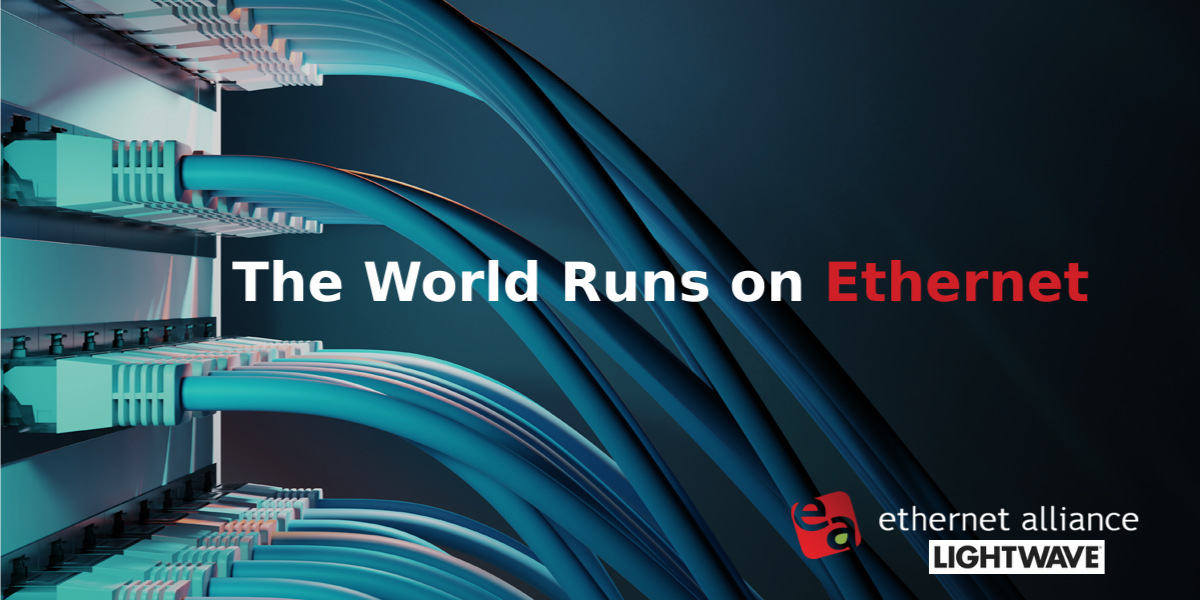Follow the Leaders: Peter Jones
Q | Please tell us a little about yourself and your company.
I’m from Perth in Western Australia, and I moved to the USA in 2001 with my family. I started as a software engineer, but now I see myself as a communicator. I’m passionate about infrastructure evolution, consumable technology, and mentoring to develop and diversify the next generation of the technology business.
I’m a Distinguished Engineer in the Cisco Networking Hardware team. I’m grateful that Cisco gives me the space to work on things that matter to me. My Cisco history is in Enterprise Switching, but my charter now includes Enterprise Routing, IoT networking, DC switching, and UCS (servers). Cisco does many things but in my space, we provide the foundations of the Internet.
Q | What do you hope to achieve during your tenure as Ethernet Alliance chair?
In addition to its role in helping new Ethernet technology succeed in the market, I see the Ethernet Alliance as a way to help people understand the value of Ethernet. Ethernet turned 50 this year, and while (almost) everyone knows what it is, few people understand its importance to the world we live in today.
I think that by bringing the people behind the technology to life, it’s easier for the consumers to understand its inherent value. A great example of this is the Ethernet Alliance “Voices of Ethernet” oral history series, which offers people the chance to hear from the remarkable individuals who feature prominently in the development of Ethernet.

Q | What role is Ethernet playing in the Fourth Industrial Revolution aka Industry 4.0?
Industry 4.0 brings the era of smartphones, machine reasoning, cyber-physical systems and cloud services to the production facilities of the world. It marks the beginning of the imagination age and promises to transform the world’s economy. As the dominant wired communications technology, Ethernet is the foundation of many of Industry 4.0’s enabling technologies.
In a recent Lightwave article, The World Runs on Ethernet: Building and Industrial Automation, I discussed this topic further with principal Ethernet Alliance member Razvan Petre of Spirent and Ethernet Alliance SPE Subcommittee Chair, Bob Voss of Panduit.
Q | Today we are seeing a huge dynamic range of Ethernet speeds from 10M to 1.6T. What is exciting about the lower speeds?
We are revisiting the lower speeds (e.g., 10Mb/s, 100Mb/s, etc) to create new varieties of Ethernet suitable for the Operational Technology (OT) world. These technologies control the systems we all depend on, such as building automation, industrial automation, and transportation.
The OT market is risk sensitive, often has assets with very long life cycles – 30-100 years in some cases – and is using technologies dating back to the 1950s. To achieve the goals of Industry 4.0, the OT world must adopt modern technologies from the IT world. But we have to make them “consumable”, which requires making them “fit for purpose” in target environments like factories, mine sites, cars, and ships.
Q | Ethernet has made it 50 years, is it the perfect technology? Why do you think it is so resilient?
Ethernet is not perfect but more importantly, it doesn’t aspire to be. Ethernet has succeeded by building a comprehensive, open community that provides the technology which underpins the Internet. Ethernet doesn’t attempt to be perfect – rather, it specifies just enough to satisfy customer needs, maintains an intense focus on interoperability, and adapts to changing needs/technologies as they arise. As Bob Metcalfe once said, “Ethernet vs Etherenot usually ends up Ethernet.”
Q | Tell us an interesting fact about yourself.
I like science fiction, and I’m an avid consumer of news, including politics, economics and the law. I also have four recumbent tricycles in my garage, three of which are Catrikes and one that’s a Gekko. Trikes aren’t just for kids, you know.






